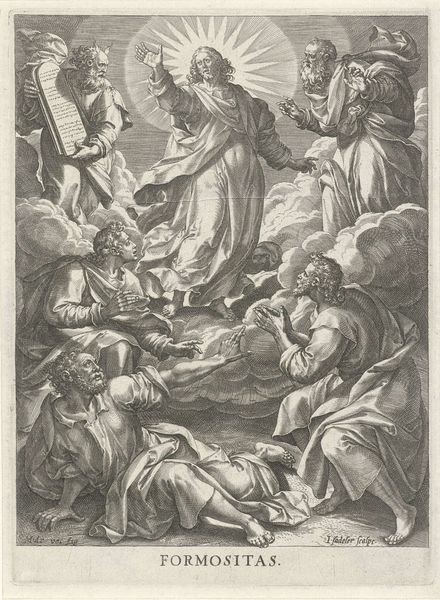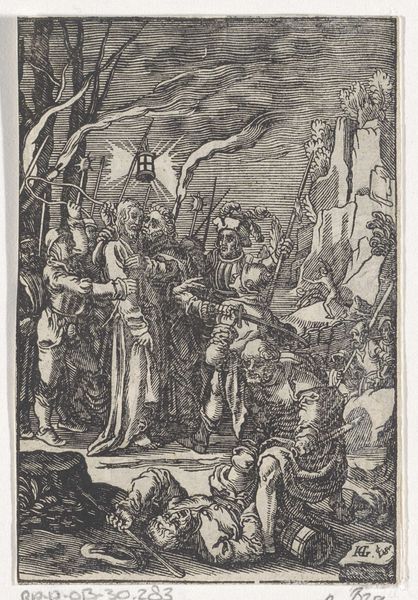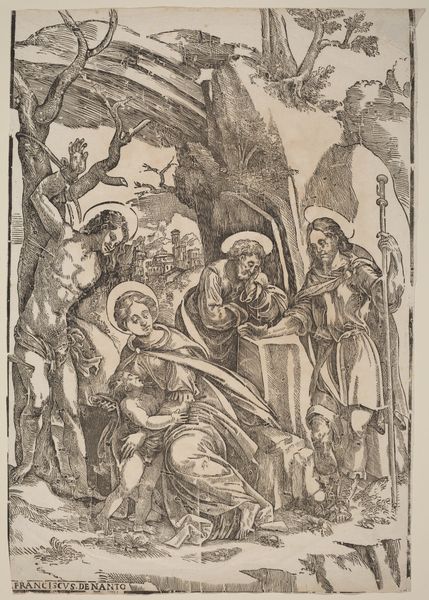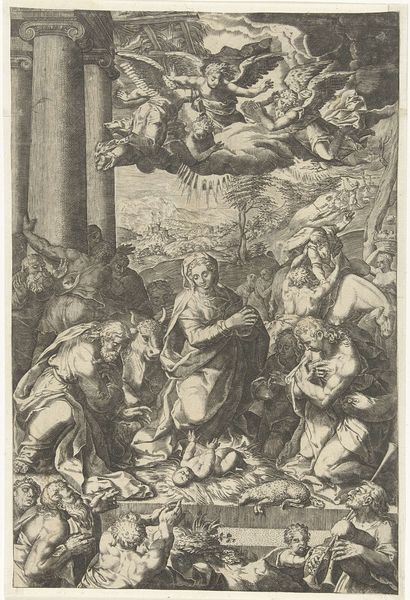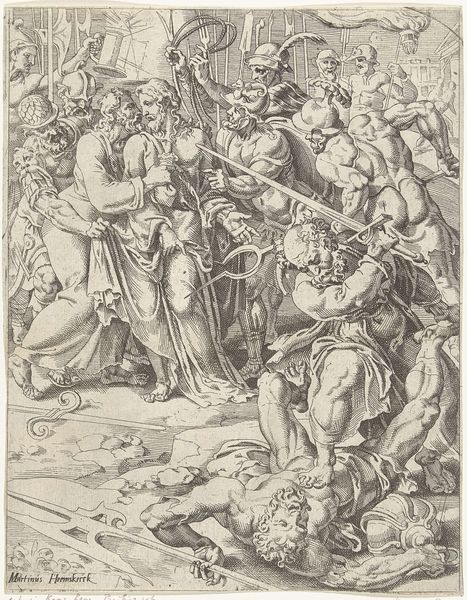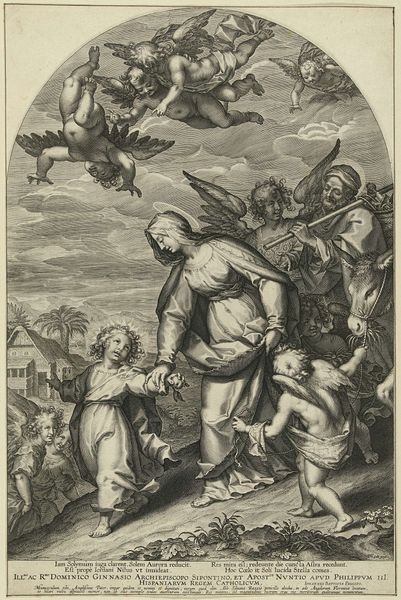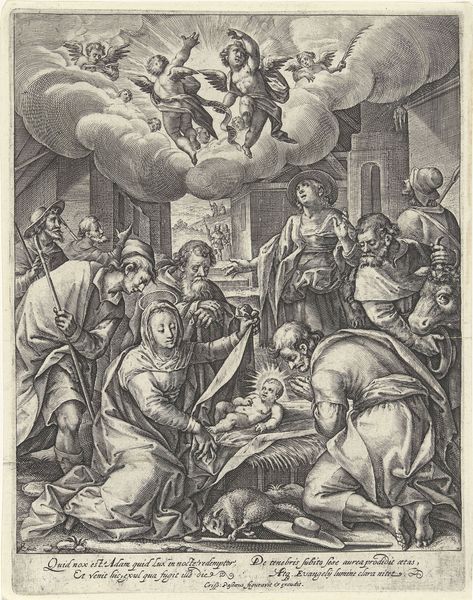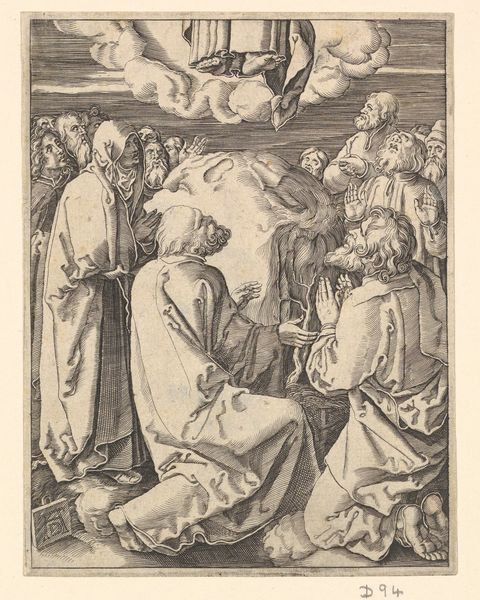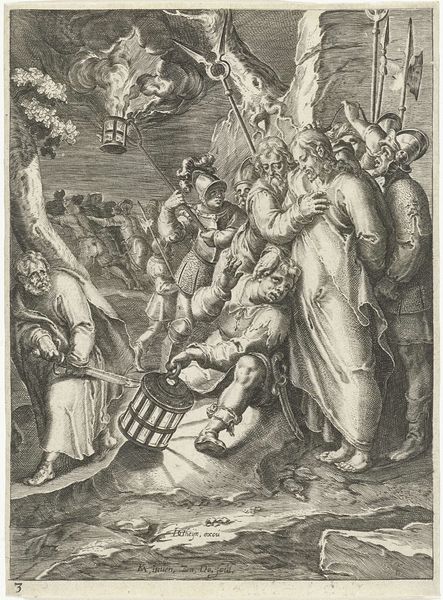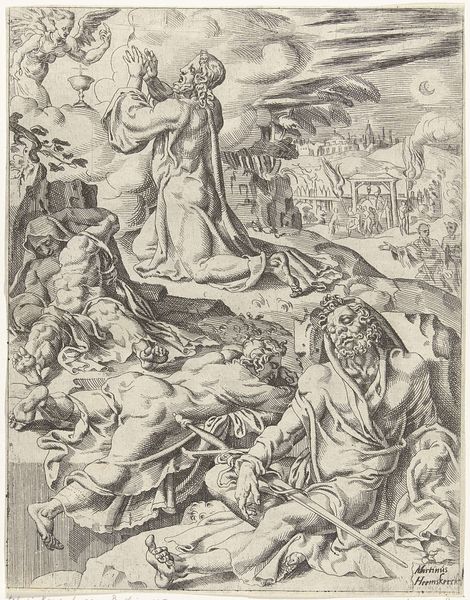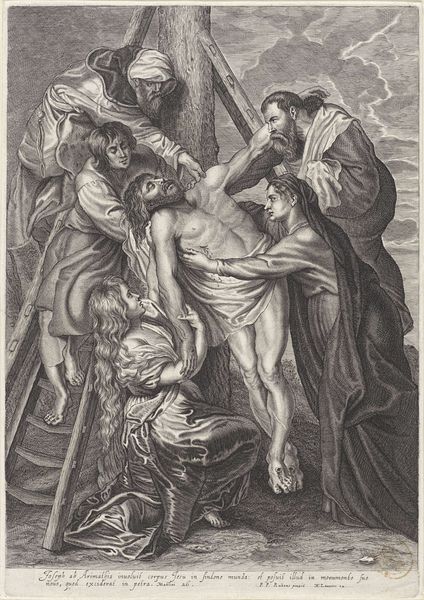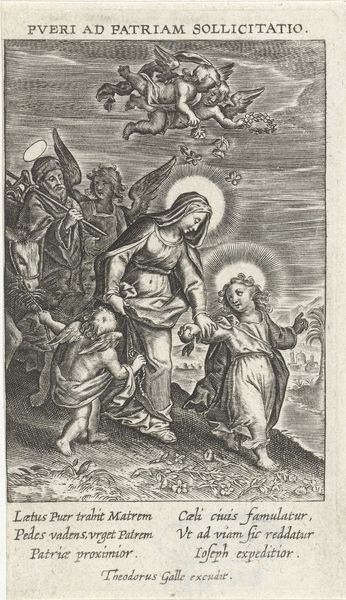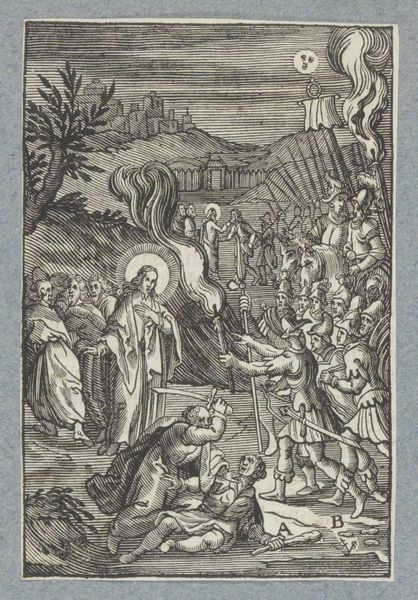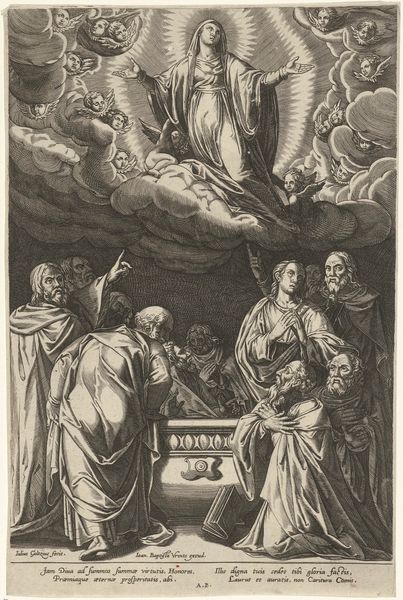
print, engraving
#
baroque
# print
#
old engraving style
#
figuration
#
history-painting
#
engraving
Dimensions: height 124 mm, width 80 mm
Copyright: Rijks Museum: Open Domain
Curator: Look at the way the moonlight seems almost cartoonish, smiling down upon this chaotic scene. It's unsettlingly whimsical against such a stark, dramatic event. Editor: Indeed. We’re looking at "The Arrest of Christ," an engraving dating from roughly 1581 to 1645. It’s currently held here at the Rijksmuseum. The artist behind this work is Karel van Mallery. Curator: Mallery captures this moment, that collision of divine patience and human betrayal, through an intriguing baroque lens, all those swooping fabrics and collapsing soldiers…almost like puppets dropped mid-performance. But the figure of Christ, he’s like a beacon. Serene. Editor: The politics of religious imagery here are unavoidable. Engravings like this weren't simply aesthetic objects; they were vital tools in spreading religious ideologies, shaping public understanding of scripture, and, in a sense, creating a visual language around faith. Curator: You see the odd halo effect around him? Not like the bright aureole that you expect. Instead, a hazy shimmer seems to absorb rather than illuminate, he radiates a different sort of energy...a quiet, concentrated strength in the eye of a whirlwind. Editor: Absolutely, the way the artist juxtaposes the central narrative with symbolic background elements, such as the unnerving moon, transforms a historical painting into an argument, a subtle persuasion that could influence viewers regardless of literacy. It is a form of public pedagogy through imagery. Curator: It makes you wonder about the hands involved in its making, beyond Van Mallery’s own – the workshop assistants, the printers, the distributors... the ripple effect of an image like this through a culture hungry for visual storytelling is quite potent. What did it mean to produce and disseminate art like this at the time? Did they feel the weight of that influence? Editor: I suspect so. Art, then as now, wasn't just mirroring society. It was actively shaping it, participating in the ongoing debates about belief, power, and morality. Thanks for this evocative reflection, that's a really wonderful way of seeing and making sense of the art of this era. Curator: Well, thank you. Seeing this made me wonder if he felt peace at that very moment, like some strange acceptance... I have that feeling like maybe so and he had known for a long time what was to come. It kind of breaks your heart.
Comments
No comments
Be the first to comment and join the conversation on the ultimate creative platform.
